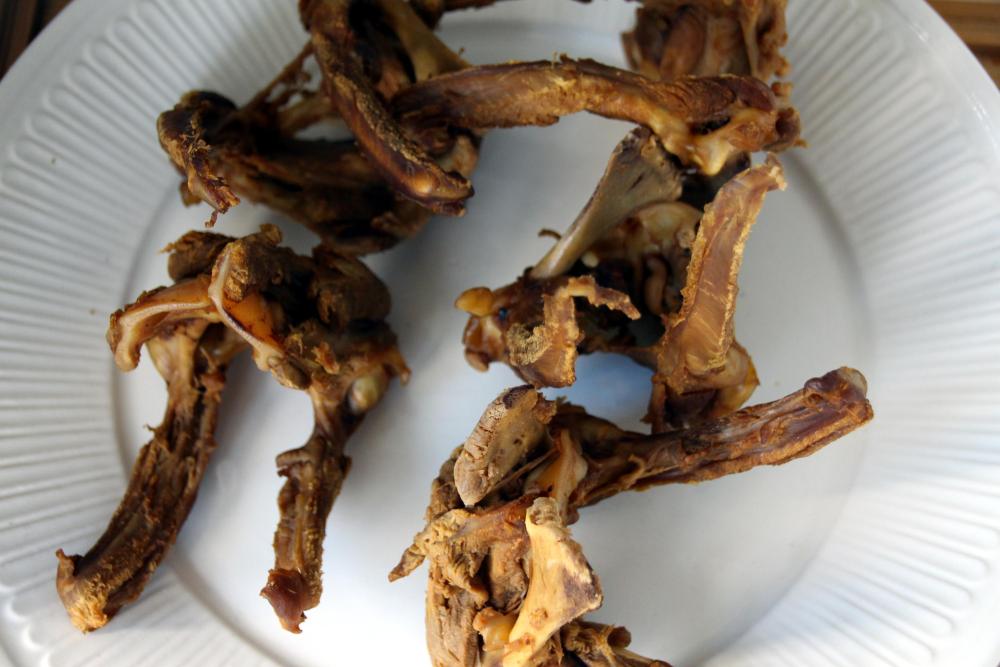For many, Christmas is a time of making wishes, often made after pulling on a wishbone. The person getting the larger part gets to wish; or is it whoever gets the smaller part? The tradition varies from place to place. But beyond that we don’t think much about wishbones. Unless you are Chinese; in that case you might be craving some.
The clavicles are your collarbones and you have two of them. One on either side. The name comes from the Latin clavicula, meaning ‘a small key’ “according to Littré ‘because it was compared to the key of a vault, or, as others think, because its form is that of the ancient bolts’.” They are the most commonly broken bones in the human body.
Poultry and other birds also have clavicles, but unlike you and I, their clavicles are fused into one, being joined by what is termed the furcula, again from Latin and this time meaning ‘a little fork’. The two clavicles and the furcula together make the wishbone.
The furcula not only holds both sides of the bird together, but acts as a spring aiding the bird in flight. As the wings descend the wishbone extends, then springs back helping the bird to raise its wingsfor the next flap. It is also believed to help pump air into the bird’s air sacs.
From medieval times, the clavicle and furcula of geese were used to make divinations, usually about the weather, but also regarding the likelihood of victory in war. The practice of making wishes based on whoever wins the wishbone pulling game is much more recent, only appearing in the 17th century.
Initially, wishbones were known as ‘merrythoughts’ which “alludes to the playful custom of two persons pulling the furcula of a fowl until it breaks; according to the popular notion, the one who gets the longer (in some districts, the shorter) piece will either be married sooner than the other, or will gain the fulfilment of any wish he may form at the moment.” That was considered to be a merry thought; hence the name. ‘Wishbone’ is only recorded from 1860 onwards, after which ‘merrythought’ all but disappeared. It remains in a few English dialects.
The Chinese are not aware of this wish granting property, they see the 鸭锁骨 (yā suǒ gǔ), the clavicle or furcula more as something to gnaw on! Duck clavicles are a popular snack, usually braised in a number of different ways. Five-spice clavicle, salt and pepper clavicle, sweet and sour clavicle, mala* clavicle etc. Clavicles are more meaty than some parts of the bird that are gnawed on. The wishbone from the Christmas or Thanksgiving turkey usually has meat attached; same with ducks.
Duck Clavicles from a Liuzhou supermarket deli counter.
* 麻辣 (má là) is the Sichuan ‘hot and numbing’ flavour sensation derived from chilli and Sichuan peppercorns.







